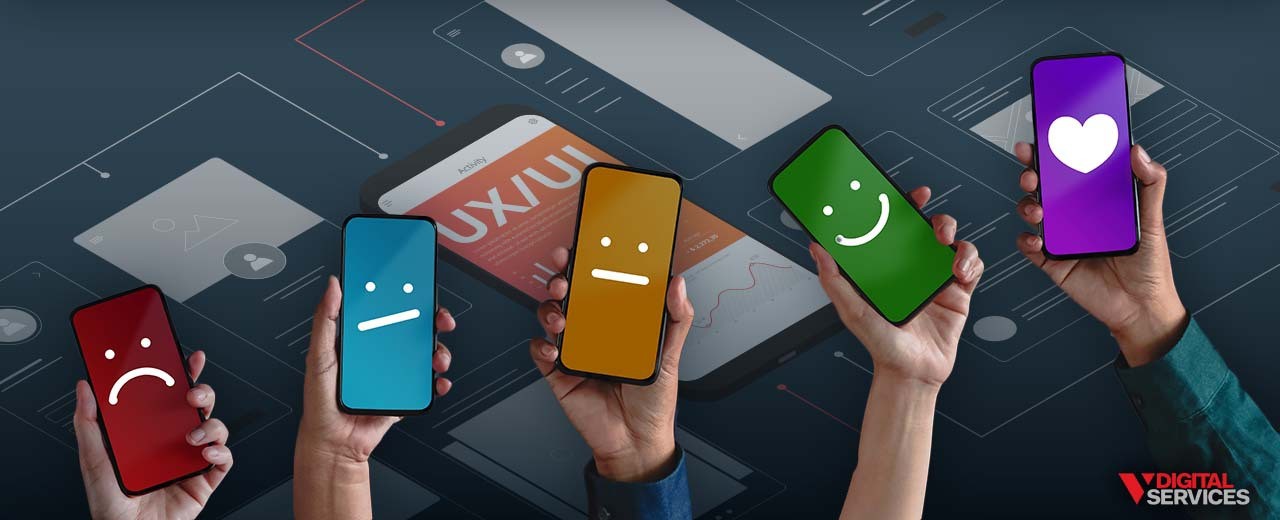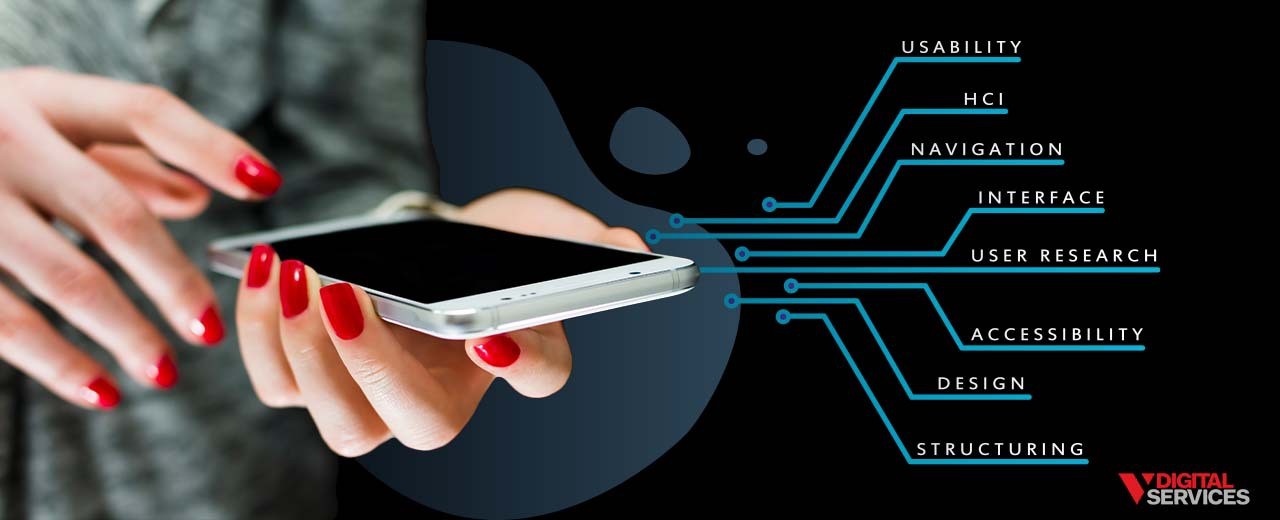User experience (UX) is easily one of the most important determining factors in the success of a website, and by extension, the business that runs it. And yet, conversations surrounding user experience are often limited by vague ideas of what UX actually looks like. What’s more, many people aren’t quite sure exactly what user experience is, never mind how to design a high-quality website UX.
Why a Good User Experience is Important
But while a surprising number of websites fall short when it comes to user experience, today’s online users have expectations that are higher than ever. It probably comes as no surprise to learn that many modern-day users are impressively savvy, with an innate ability to pick up on the various shortcomings of a website. They may not have the technical expertise to pinpoint exactly why and how a website is subpar, but they can certainly notice when the website user experience misses the mark.
For businesses aiming to create a successful website, this makes the user experience a top priority of the design development process. It’s not enough to simply build a website that looks great; it should also boast flawless functionality.
What Exactly is User Experience (UX)?
User experience (also called website UX and website user experience) is a delicate balance between the goals and objectives of the website owner (the business) and the needs, values, and limitations of the online user (the customer). In general, the purpose of UX best practices is to increase the quality of a user’s interaction with your website, and in turn, the positivity of their perception of your products/services.
According to the U.S. General Services Administration and Technology Transformation Services, there are six key components of user experience. Each UX factor is centered around a common goal: to provide something of value to users. During the process of website design, user experience best practices should guide you to ensure that your site is:
- Useful: Users can fulfill a need via your original content
- Useable: Your website is simple and easy to use
- Desirable: Your website’s design, including images, branding, and other elements, are effectively used for aesthetic and emotional purposes
- Findable: Your website content can be located both on and offsite, without presenting navigation challenges
- Accessible: Your website is accessible to individuals with disabilities
- Credible: Users can trust that you are a reliable source of information
What Does a Good User Experience Look Like?
There’s not necessarily only one way to achieve excellent UX design, largely because the ideal experience depends on both your business and your target user. However, you can generally characterize a good user experience as one that involves these four basic stages:
- A user visits your website.
- The user successfully navigates through various web pages.
- The user is able to understand the content and its purpose.
- The user gets what they want and achieves their goal.
User experience vs. user interface
You’ll often hear the terms “user experience” and “user interface” used interchangeably, but there are a few key differences.
User interface focuses on how a specific product/service looks and works on a surface level.
User experience is the functionality of that product/service, specifically in relation to how it helps a user achieve a particular goal.
You need both to make users happy. Think of the user interface (UI) as a piece in the larger puzzle of user experience.
How to Optimize for User Experience (UX)
Multiple elements make up a good user experience, and each one is important in its own way.
- Create high-quality, relevant content. Your website needs to function well, but the actual content also needs to meet users’ needs. Rather than churning out generic content, focus on developing thoughtful content that users will find interesting and useful. Be sure to tailor your content appropriately and position the user as the “hero” of their own story. You can provide them with products/services that solve their problem, but they’re the ones captaining the ship.
- Start with an intuitive interface with a consistent design. All of the first-class content in the world doesn’t matter if users can’t easily access it. A skilled designer/developer can help you construct a sensical interface that will feel natural for users, minimizing the amount of effort required to move about your site. Elements such as font styles and sizes, as well as colors, should be cohesive. Also, factors such as a drop-down menu, search bar, and navigation bar contribute to a good UX.
- Build as much credibility as possible. Online users have learned to be naturally suspicious in a world rife with cybercrime. So, you’ll need to work twice as hard to prove that your website is one to be trusted. One option is to add an SSL certificate to give users peace of mind. A professional-looking design and updated, error-free content are also helpful.
- Don’t underestimate the value of human interaction. We’ve all experienced the frustration of submitting a contact form and receiving no reply, which leads most of us to end any attempts to do business with the company in question. If your website has a contact form or something similar (and it should), you need to implement an effective protocol for a rapid response from a real-life person. A customer service representative should promptly reach out to all customer queries to uphold a high standard of UX and service quality.
- Stick to established conventions. The large majority of websites out there stick to a “traditional” set of conventions. For example, you can usually count on finding:
- A company logo in the top-left corner of the page
- A navigation menu either at the top center or right side of the page
- Contact information accessible via the main navigation menu
- A call-to-action (CTA) button near the top (such as “Call Us!” or “Schedule Now!”)
- A search feature located in the page header
- A sign-up form in the web page’s footer
- Social media links presented as icons, often in the footer
- A detailed sitemap and other less-used links in the footer (Terms of Use, Privacy, etc.)
- Prioritize readability. Are you more likely to read through an entire wall of text, or would you prefer the option to skim a few brief bullet points? More than likely, you’d rather be presented with a short and simple section of text in easy-to-digest pieces. When you are creating copy, make sure you are looking at it from a user’s perspective with just a few moments to spare. Maximize readability by:
- Using short, descriptive headings to split content.
- Keeping paragraphs short.
- Using bulleted/numbered lists.
- Highlighting key information using bold or italicized text.
- Making strategic use of visual content, such as infographics, images, slideshows, and videos.
- Ensure that your website is mobile-friendly. A responsive or mobile-friendly website functions equally well on mobile and desktop devices. And in a world where most of us are browsing online using our smartphones, this is a hugely important aspect of UX.
Why is User Experience Important?
When you think of user experience, web design and development might be your first thought. For many website owners, their focus is on how a quality UX will benefit their business. However, it’s important to understand that the advantages of an excellent user experience extend to the users as well. Essentially, delivering a great website UX is a win-win for everyone involved.
For a website owner and business, a thoughtful approach to the user experience can significantly optimize the customer conversion funnel. In other words, you want to do everything you can to make the journey from awareness to action as smooth and obstacle-free as possible.
For example, let’s say you want users to move through a series of stages that ends with them purchasing a video course about photography:
- While reading one of your blog posts, the user notices a newsletter sign-up form that offers free and exclusive content focused on learning new photography skills.
- They sign up for your newsletter and are highly satisfied with the content you provide.
- They receive an automated email from your site a week or two later, advertising a 10% discount on your full, 10-hour video course.
- From here, there are one of two things that could happen once they click on the email link and arrive on a landing page:
- The landing page delivers a clean, simple UX, reaffirming the user’s belief that you are a credible source with something worthwhile to offer.
- The landing page does not provide a quality UX, frustrating the user and leading them to decide against purchasing the course.
As you can see, neglecting user experience – even on a single landing page – can have detrimental effects on your online presence, reputation, and revenue alike.
For anyone that prefers to take a data-driven approach, the user experience statistics speak for themselves:
- For every $1 you invest in UX, you can expect a return of up to $100. If you do the math, that’s an astounding ROI rate of 9,900%! (Forrester)
- Getting rid of “friction” in the user experience could increase your conversion rate upwards of 400%. (Forrester)
- More than 30% of users would abandon a brand – even one they used to love – after just one bad experience. (PWC)
- About 91% of people that are dissatisfied will simply leave without ever submitting feedback of any kind – that’s a significant number of potential customers you could be losing without even realizing it. (Kolsky)
One of the most important and meaningful data points is this: 88% of online users say they are less likely to return to a website after having a poor user experience.
Goals and Key Performance Indicators (KPIs) for UX
If you have specific goals in mind for your website or business, chances are good that you can support your progress towards those goals by optimizing user experience. Here are a few general goals and their related measurements/KPIs, all of which you can easily tie to UX:
- Improve overall website performance
- Cut down on user error or confusion
- Speed up loading times
- Focus on user-friendly design
- Expand online presence and brand exposure
- Ramp up traffic and audience size
- Boost the number of return visitors (retaining users)
- Attract more new visitors
- Achieve a higher number of visits via search
- Strengthen brand credibility
- Enhance user satisfaction levels
- Increase overall trust
- Increase the number of referral-related visits
- Optimize use of resources
- Cut down on development costs and time
- Reduce the cost of website maintenance and redesign
- Minimize user support requests/associated costs
- Increase profitability/sales
- Achieve a higher number of transactions/purchases
- Raise product sales overall
Optimize Your Website User Experience and See the Benefits for Yourself
By now, you can understand why website design is so critical when it comes to user experience. But in many cases, UX isn’t a part of the conversation between businesses and the web developers they hire – though it certainly should be.
At V Digital Services, our web design and development team takes a user-centric approach to building a website that works for your customers and business. When users are satisfied, we firmly believe that your many other pieces – like SEO, social media marketing, and more – fall into place. And because we are a full-service digital marketing agency with a diverse range of skilled specialists, we have teams to tackle every goal and challenge you can think of.
Learn more about how to make users fall in love with your website when you connect with the V Digital Services team today.
Image Source: Aleksandr_a , Black Salmon , Antun Hirsman , astel design , Nikola Stanisic , Chaosamran_Studio / Shutterstock





 E Commerce, UX, Web Design
E Commerce, UX, Web Design PREVIOUS
PREVIOUS
“Pop-ups that can’t be closed, images that won’t load and other such annoyances can frustrate users.” Perfect timing on this, and it’s important to reiterate that because “intrusive” popups affect content accessibility and UX, they will start to be penalized on mobile search starting January 10, 2017.
https://webmasters.googleblog.com/2016/08/helping-users-easily-access-content-on.html
It really interests me to read such articles, thanks for sharing. Blogs like yours and info http://activesystems.ph really helps me learn more day by day.